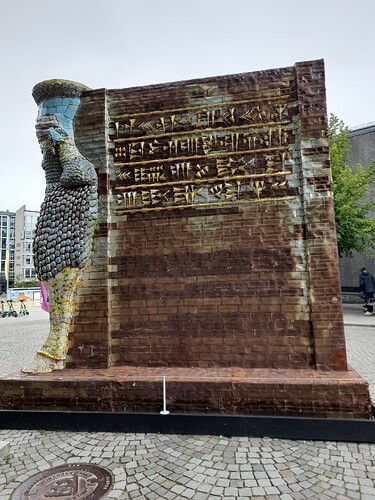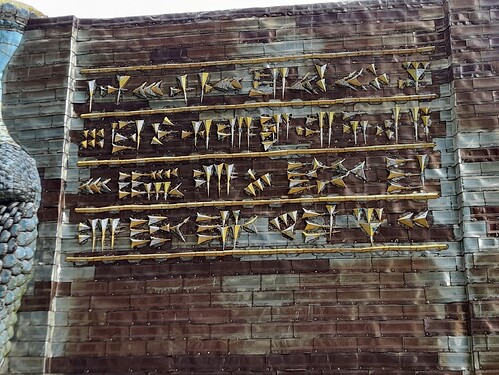- The Wise-Woman’s Dog - A Bronze Age Adventure
Your human’s sick. Or rather, judging by the smell of her, cursed. (Which, in the world of this game, amounts to about the same thing.)
Normally, a cursed person would need the help of the village wise-woman to redirect the curse and stash it somewhere out of harm’s way. The problem is, your human is the village wise-woman!
Fortunately, you’re an experienced and well-trained helper to her medicinal ministrations. With your keen senses and magical affinity, you have a good chance of helping her.
The Wise-Woman’s Dog is a marvelous game. One of the very best I’ve played.
Partly, of course, this is because it ticks so many of my subjective preference boxes.
There’s the non-human protagonist. Playing as a dog naturally limits your abilities to manipulate the surroundings or carry stuff with you. (Somehow, whereas a human adventurer with a bottomless inventory merely gets a shrug and a chuckle out of me, I would not accept this for an animal PC.) These limits form an intuitive framework from which a lot of the puzzles flow naturally. Finding the clever workaround solution to these puzzles, realising that you’re engaged with the game in such a way that you’re thinking like a four-legged, one-mouthed, magically intelligent shaman’s pet is a real thrill.
The story is set in ancient history, 1280 BC in Hittite territory, during those short few decades when the Great King had his seat in Tarhuntassa, before it was moved back to Hatussa, to be exact. (Yes, I’ve been diligently reading the footnotes.)
First off, let me say that it’s definitely worth it to turn up the sound and listen to (an approximation of) the music of the Hittites while you play. It deepens the engagement with the setting a lot.
The locale where the story starts is a small bronze-age farming village. The details of living are portrayed vividly, the irrigation works and the large variety of crops, the hustle-and-bustle of bringing the taxes on board the barges, the houses with their differences in size and the differences in social stature connected to them. And of course the people. They’re all so lifelike, going about their daily lives, it’s only natural that you would want to help them with the small or large mishaps and problems they experience. It’s only once you find yourself juggling magic spells to help a slave fix the pipes that you might realise that you’re solving adventure-puzzles.
The city, where you must travel later on, stands in stark contrast to that cozy village. Large and imposing behind its iron-reinforced gates, bustling with commerce, the loud and busy market areas, the cramped alleys and hidden back-passages where surprises wait… (I love the mention of small-scale use of iron. It shows that we’re on a tipping point of history)
The historical setting is supported by copious footnotes, it feels at times as if the author has incorporated a beginner’s encyclopaedia about the Hittite era in the game. Despite a gentle nudge not to get lost in the notes after you’ve read three or four at a time, I must have spent around half an hour of the allotted two hours reading about pithoi, Tarhunt, and the Great King.
More generally, what makes this game perfect for me is that at its core it’s an unabashed oldschool puzzlefest, almost seamlessly enveloped in this lush and living world.
Outside of those personal preferences, The Wise-Woman’s Dog also boasts a lot of technical know-how and writing craft.
When I said “oldschool” earlier, I’m talking about the style of puzzles, the way of interacting with the surroundings (TAKE and PUT ON being the most important actions). The Wise-Woman’s Dog is decidedly modern in all the quality-of-life features and mouse-activated shortcuts it provides. Actually, it’s perfectly possible to play the entire game without using the keyboard, solely clicking on keywords in the descriptions or shortcut links in the status bar. After a while I settled on a half-and-half method of issuing commands. Engaging with the people and items around the village and city, I opted for the freedom of parser typing, while for slightly out-of-game commands like getting a list of spells or objects I just clicked on the relevant button.
In those lists of spells or objects, you find an incredibly helpful pair of shortcut commands that make your faithful dog protagonist cross the map in the blink of an eye and acquire or deposit the intended spell or object. The first, FETCH, is just wonderful. Say you’re standing before a locked gate and you remember the thing you need to open it. FETCH will go and pick up the thing wherever it is, and return you to the location of the locked gate where it’s needed. Its twin, STASH, does the same in reverse, dropping off something to free up room for other stuff in your limited inventory. In my opinion, STASH is too powerful as it is now. Just like FETCH, it returns you to your previous location. On many occasions, I would rather have had the action stop at the drop spot, ready to contemplate my next actions.
The map of the game world had me wondering for a while. I like large and twisty maps that give me the feeling that I’m truly exploring an unknown place. This is one of the only times I had that feeling in a game which uses only cardinal directions, and a few well-judged instances of up and down. (Another author who manages to make a simple N-S connection feel twisted and warped is @Jamespking(Marco Innocenti), in A1RLOCK and Andromeda Apocalypse) Especially in the city, despite only ever going N, E, W, or S, I could imagine crooked alleys and looping back passages.
For the purposes of navigation too, the mouse-interface is very useful: just click on the location of your choosing and you will make a beeline there (barring any critical obstacles or events). And for the typing enthusiasts, GO TO is available too.
The writing in The Wise-Woman’s Dog is evocative enough to transport you to ancient Hittite civilization, while delegating the finer points to the footnotes for those hungry for more elaborate details. The location descriptions, aside from providing all the necessary practical information, always have some distinct feature or two to keep the mind grounded in the historical setting.
For me, the art and craft of writing stands out in the meticulously scripted and enthusiastically written events and NPC monologues. It was a true joy to just stand around typing Z while Iyali told the story of the God and the Dragon, to watch the boy on the market’s ball-and-cup game, to listen to the High Priest’s explanation of the concept of Purity inside or outside the temple…
(A special mention in this regard goes to the conversation between two farmers in the village, a quarrel between Zuwa and Mahori about a lost bronze sickle. Congatulations to Ada Stelzer for the hilariously over-eloquent words of Mahori in his attack on the bumbling and mumbling Zuwa.)
@Draconis , if you had set out with the express goal of making a game just for me, you couldn’t have done any better than The Wise-Woman’s Dog.
I loved it.
Here, have some cuneiform:
Close up:
Photograph of a sculpture resembling a brick wall with a Hittite (or other similar culture?
Sumerian? Perhaps Daniel knows) Lion/King figure next to it. On the wall is a text in
cuneiform writing.
I took the picture in the city Stavanger in Norway. It’s entirely made of empty smashed
date cans and wrappers, a reference to colonial exploitation. Perhaps Daniel can
enlighten us with a translation?


